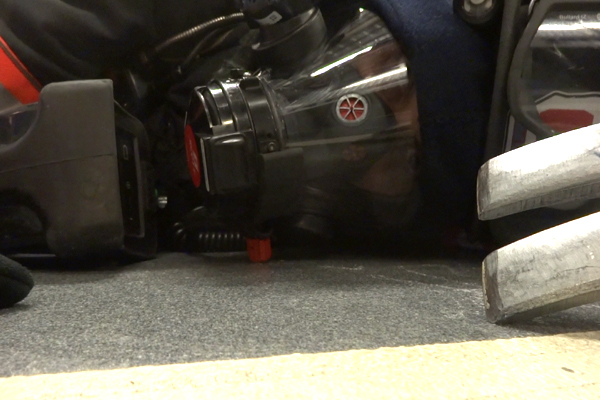I don't want to bore you with the concepts that you might think will be useless in real combat. So I will ask you one simple question: when visibility is zero and you don't know the layout, would you rather search a five-room office for 15 minutes and even face a possibility of running out of air or would you prefer to attain a full coverage of this surprise layout in 2 minutes and 40 seconds? I bet you want 2:40! If you do, bear with me and I will show you how you can consistently do it without ever seeing a square inch of any given building.
In order to get to this level of performance, it's not enough to just learn a few tricks and jump right in. You need to start with a solid foundation that changes the way you approach the primary search and ultimately allows for consistently safer and quicker searches.
Below is the list of ten fundamental principles that I use to conduct searches, practice searches and teach others to search. It summarizes how my method of conducting and teaching primary search differs from everything I have seen before. You can click on the links to learn more about each item immediately, but I recommend that you simply continue to click on the "Next" button at the end of the page to learn the material in correct order.
- Taking primary search seriously – primary search is a dangerous and difficult activity and requires much more training and insight than we have now.
- Understanding modern fires – the fires around us have changed in the last 30 years, so some older methods of search are no longer safe and effective. Modern fires are more toxic, rapid, unpredictable, hotter and offer less visibility due to thick black smoke. All of this is due to the fact that fuel load has changed from wood to synthetics and buildings are erected predominantly using lightweight construction.
- Fireground priorities – as the fires have changed with time, we must adjust the list of what we consider the most important when we fight these modern fires.
- Systematic approach – you can't solve a difficult problem like primary search without first organizing it into a well-structured system.
- Objective evidence – search methods should be selected based on a solid proof of effectiveness, not beliefs or preferences.
- Combat applicability – methods that are too complicated to be used under severe combat stress must be rejected.
- Primary search as navigation – if you solve the problem of navigation, you solve 90% of all your problems in primary search, if you don't solve this problem, you won't find the victims and won't save them and will get lost yourself.
- Two core requirements – all search method selection and subsequent training in primary search must be always, always, always done with two core requirements met: you should expect zero visibility and you should expect unknown or modified layout. Your mask should be always obscured in training and you should ask you colleagues to change the layout for each entry.
- Realistic training – all training should be always done in full gear, including the use of SCBA, because if you train without full gear, you will be uncomfortable in combat, will likely remove the mask in case of firefighter emergency and also will likely forget to complete your PPE ensemble while rushing in during real fires.
- Train in safe environment first, then fight – before applying any new skills in combat, practice them to perfection in a safe training environment: IDLH-free atmosphere and full visibility for instructors. The best way to achieve that is obscured masks. For some evolutions you can use theatrical smoke, but never use any form of combustion and/or real smoke.
Now press on the "Next" button below to start learning important details about each of these ten principles. Once you are done with that, you will be ready to conquer the technical aspects of conducting better searches.






